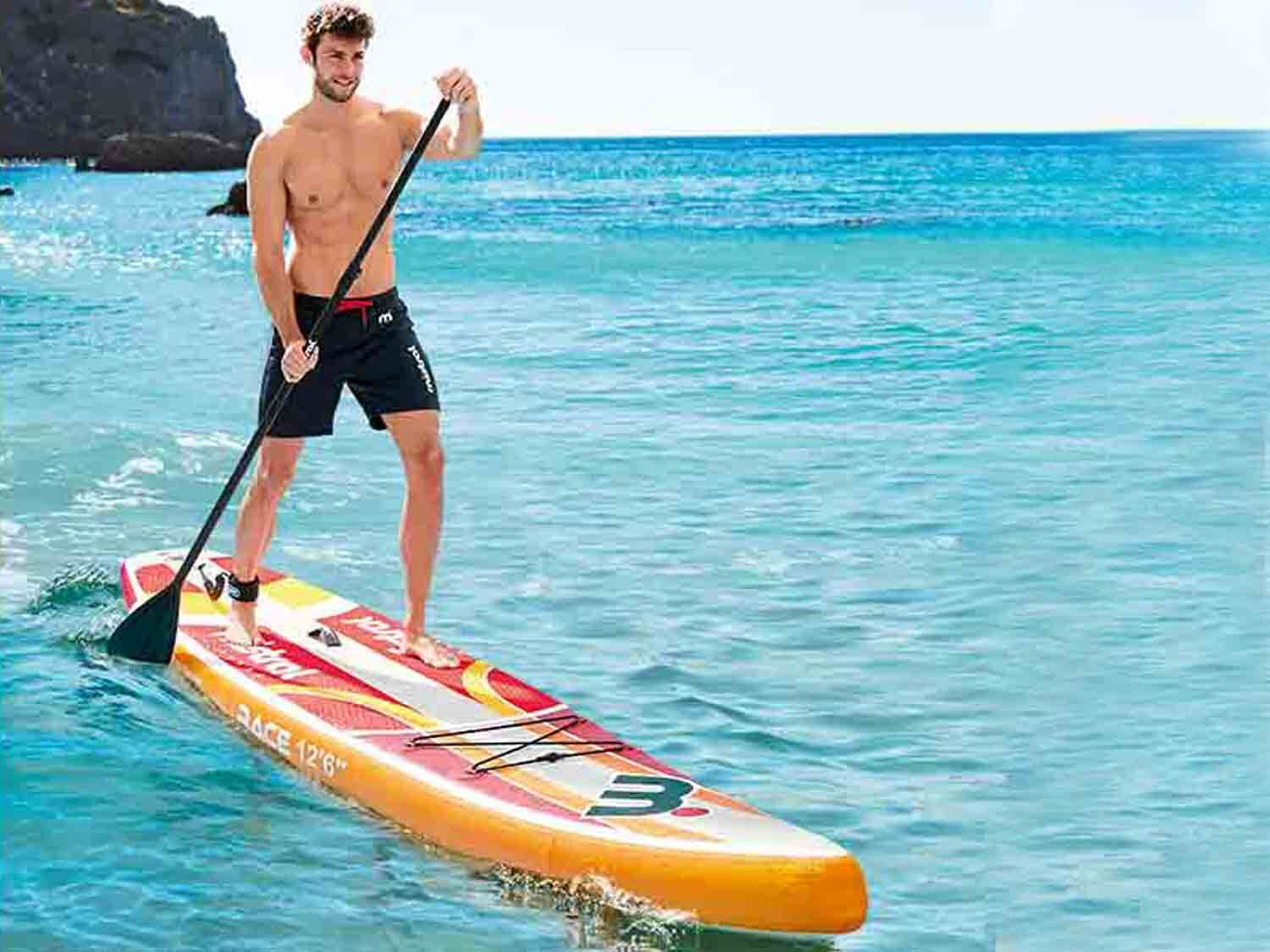
Choosing the right paddle for your paddle board is an essential part of the overall paddle boarding experience. The right paddle can improve your efficiency, comfort, and enjoyment on the water, while the wrong paddle can lead to fatigue, discomfort, and even injuries. In this article, we will discuss how to choose the right paddle for your paddle board.
Determine Your Paddle Boarding Style
The first step in choosing the right paddle for your paddle board is to determine your paddle boarding style. Different paddle boarding styles require different types of paddles, so it’s important to choose a paddle that is appropriate for your style.
For example, if you are into paddle board racing or touring, you will need a longer and narrower blade to help you generate more speed. On the other hand, if you are into recreational paddle boarding or surfing, you will need a broader blade to help you maneuver through the water.
Choose the Right Paddle Length
The length of your paddle is important in determining your comfort and efficiency on the water. Choosing a paddle that is too long or too short can lead to fatigue, discomfort, and even injuries.
The right paddle length is determined by your height and the type of paddle boarding you will be doing. As a general rule, the paddle should be 6-10 inches taller than your height. If you are into touring or racing, you will need a longer paddle, while recreational paddle boarding or surfing requires a shorter paddle.
Consider the Blade Size and Shape
The size and shape of the blade are also important factors in choosing the right paddle for your paddle board. The size of the blade determines how much power you can generate with each stroke, while the shape determines how efficiently the paddle moves through the water.
If you are into paddle board racing or touring, you will need a narrower blade that can generate more power with each stroke. If you are into recreational paddle boarding or surfing, you will need a broader blade that can help you maneuver through the water more efficiently.
Choose the Right Material
The material of your paddle is also important in determining its weight, durability, and cost. Paddles are typically made of wood, fiberglass, carbon fiber, or aluminum.
Wooden paddles are the heaviest but are also the most durable and affordable. Fiberglass paddles are lighter and more durable than wooden paddles but are more expensive. Carbon fiber paddles are the lightest and most durable but are also the most expensive. Aluminum paddles are the heaviest and least expensive but are also the least durable.
Consider the Paddle Shaft
The shaft of the paddle is the part that you hold on to when paddling. It is important to choose a shaft that is comfortable and fits your grip style.
Paddle shafts come in different shapes and sizes. Some paddles have a straight shaft, while others have a curved or ergonomic shape. Some paddles have a smaller diameter, while others have a larger diameter. It’s important to choose a paddle shaft that is comfortable and fits your grip style.
Test the Paddle
Before purchasing a paddle, it’s important to test it out to ensure that it’s the right fit for you. Most paddle shops have demo paddles that you can try out in the water to see how they feel.
Testing the paddle will give you a better idea of how it feels in your hands, how it moves through the water, and how it affects your paddle boarding experience. This can help you make a better-informed decision when choosing the right paddle for your paddle board.
Conclusion
Choosing the right paddle for your paddle board is an essential part of the overall paddle boarding experience. By determining your paddle boarding style, choosing the right paddle length, considering the blade size and shape, choosing the right material, considering the paddle shaft, and testing the paddle, you can choose the right paddle that fits your needs and preferences. A good paddle can improve your efficiency, comfort, and enjoyment on the water, while the wrong paddle can lead to fatigue, discomfort, and even injuries. By following these guidelines, you can choose the right paddle for your paddle board and enjoy a fun and safe paddle boarding experience.

